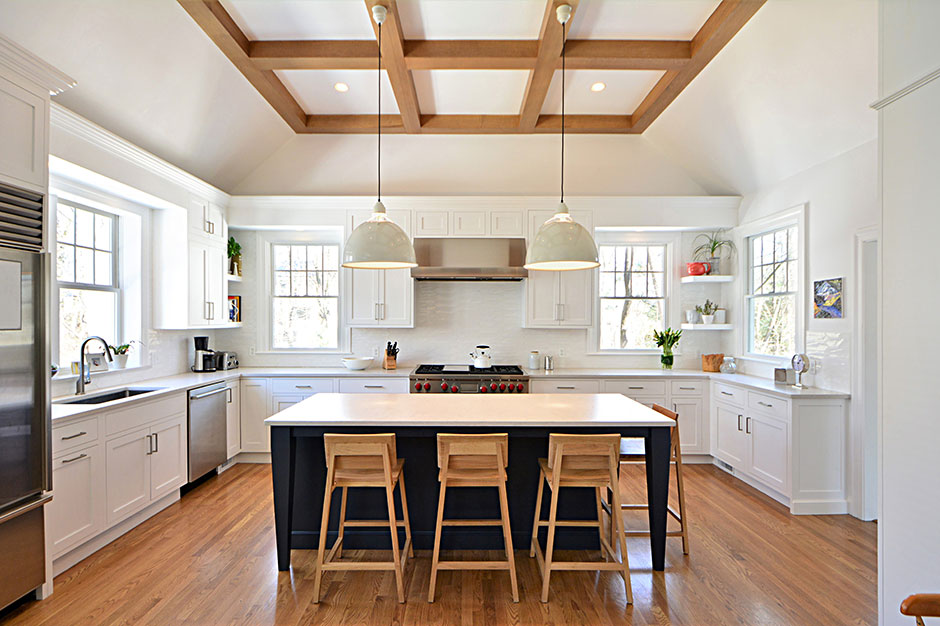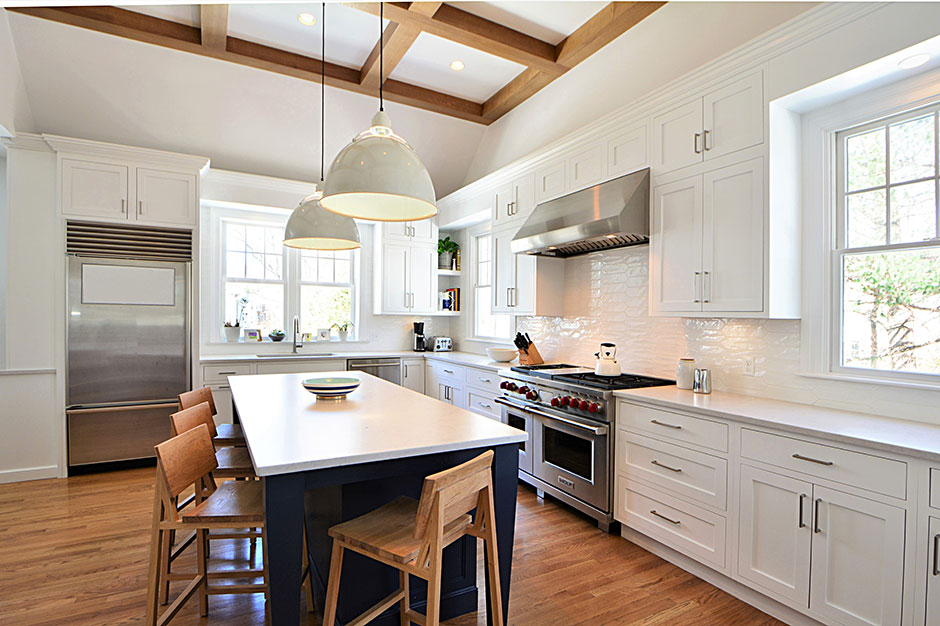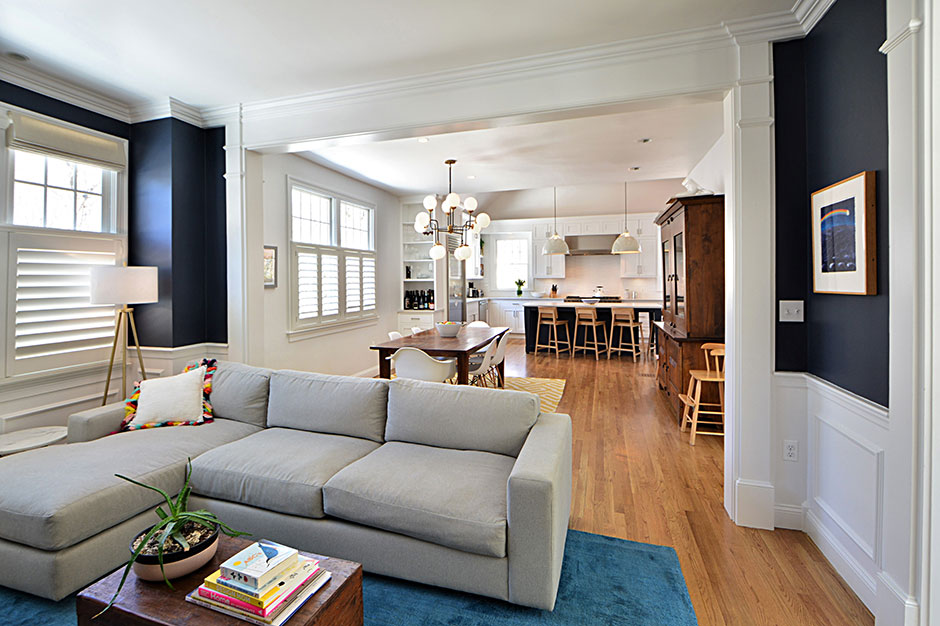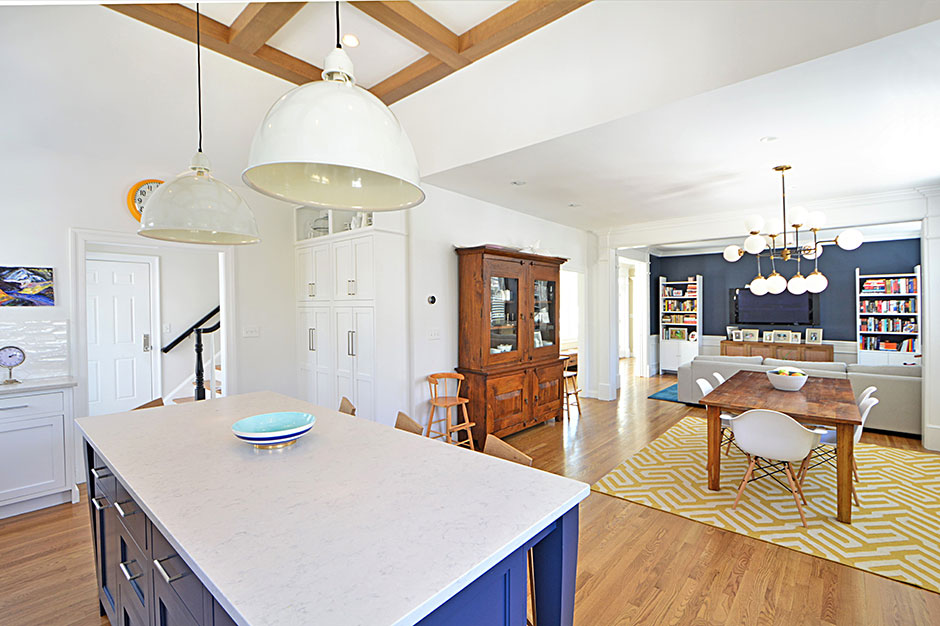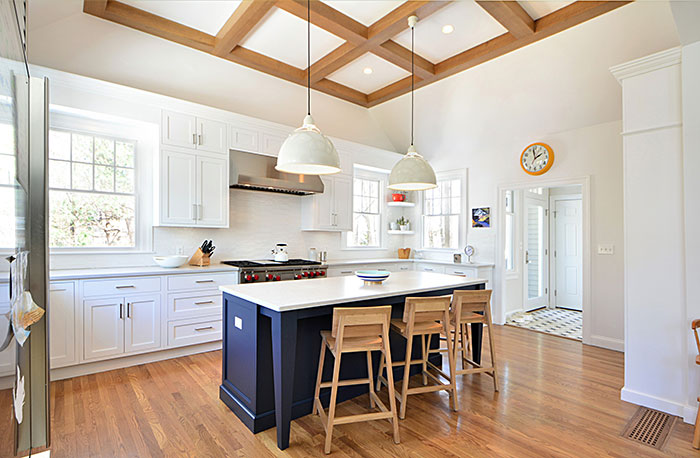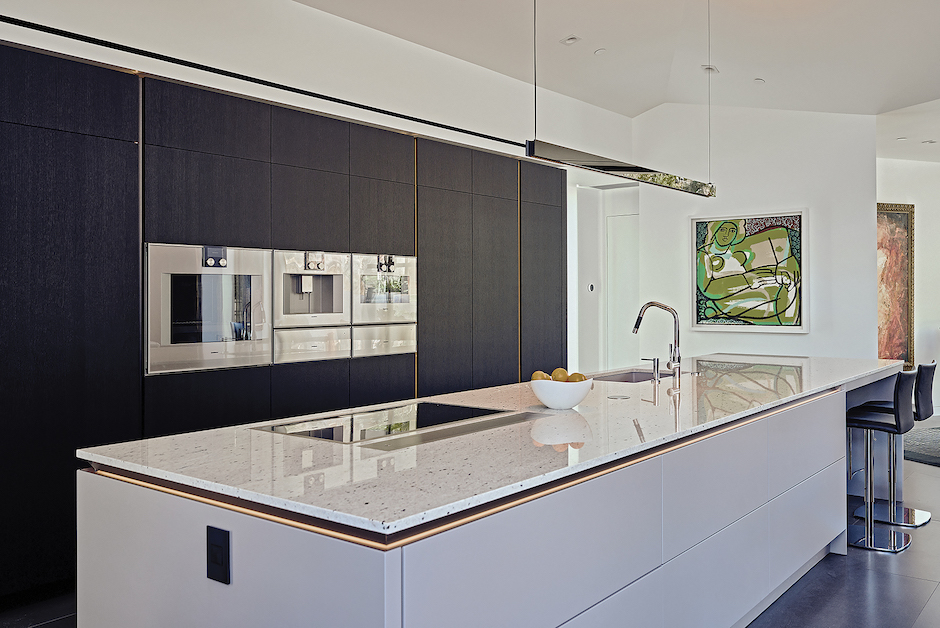January 29, 2018
Even a brand-new house can seem outdated when the layout is dysfunctional. For one family in only a 10-year-old home, the kitchen was not conducive for their cooking and entertaining needs. They hoped an easy update would solve the problem, but designer Ray Wiese of Sherborn, Mass.-based The Wiese Co. immediately saw that a simple fix was not the answer for this project.
“The clients called because they needed someone to rethink the existing kitchen layout and help with some organizing ideas,” he explained. “In the initial visit, it was clear this developer-designed home needed more than a different kitchen layout.”
Changing the Layout
These homeowners love to cook at home, but with the cooktop on the island and far from the sink and refrigerator, the floor plan did not work well. The kitchen had no windows in the main space, and its cherry wood cabinetry and deep gray countertops contributed its darkness. In addition, a wall closed off the kitchen from the living room and dining area.
Wiese and his team felt this home would most benefit from a complete change in room roles; the narrow kitchen would be moved to the much bigger and brighter family room, the family room would go to the dining room near the new kitchen, and the dining room would be where the original kitchen was. He also suggested building a deck off the kitchen so the homeowners – who enjoy dining outdoors – did not have to walk downstairs to the patio to be outside.
“The first major challenge was helping shift the clients’ paradigm about the layout,” said Wiese, explaining that his team of designers used AutoCAD to show the client how their idea would pan out. “Working together pushes our own ideas further and helps the client see different perspectives.”
Lowering the Ceiling
One of the main benefits of moving the kitchen to the former family room is that it is now in a space open to the rest of the home. However, the ceiling was so high that the kitchen might have felt out of place if it was installed as is.
“One of my pet peeves is arbitrary ceiling height,” said Wiese. “To improve the interior architecture, we lowered the vaulted ceiling from 14 to 12 feet. This was a more embracing and proportionate height and allowed the transitional white oak coffer lining the ceiling to have the width to be celebrated properly.”
The height removal didn’t require any structural work, but the team added a decorative wooden casing on the ceiling over the kitchen island to show a definition of space. The touch of wood also warms up the overall white palette and connects with the island’s wooden bar stools.
White and Navy
The clients wanted a white kitchen, so the designer installed simple white-painted cabinets with stainless steel hardware. The majority of the storage is base cabinetry, with a few uppers framing the hood and the windows. A few sections of open shelving for decorative items add airiness and the potential for color in the white kitchen.
The white is also contrasted by a pop of navy on the island base. This deep color is repeated on the far end of the space with a seating area.
“Navy is the new black, and it connects the living area on one end with the island on the other,” said the designer. “It is also working in synergy with the lighter floors that have a gray pigment.”
Over the island, two bell-shaped pendants in white illuminate the main gathering space. Simple white subway tile on the backsplash completes the white background, while a six-burner range with red knobs adds another touch of color to the kitchen.
“This clean, sleek and casual design allows the new open floor plan to work well with the rest of the home,” said Wiese.
Source List
Designer: Ray Wiese, The Wiese Co.
